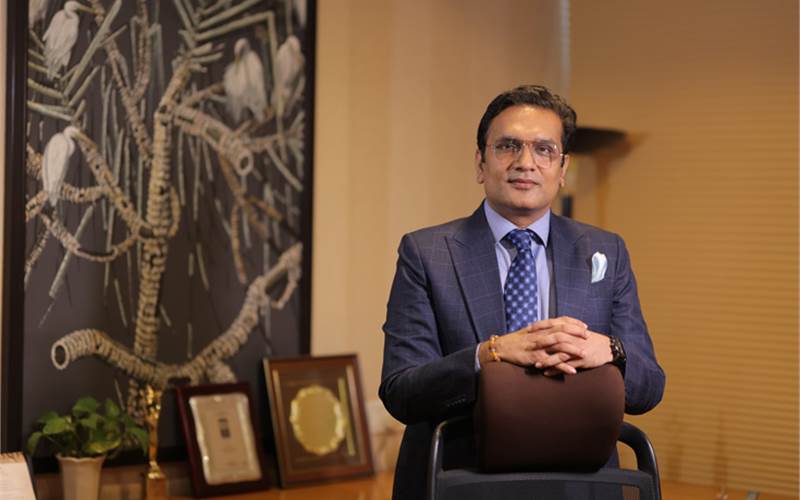Sustainability and Innovation driving the packaging industry
In an exclusive writeup for PrintWeek, Pankaj Poddar, Group CEO, Cosmo First, explains why sustainability and innovation are the future drivers of the packaging industry.
28 Dec 2022 | By PrintWeek Team
The Indian packaging industry has seen a number of changes in current years and had a successful year in 2022. With the country’s economy continuing to expand at a strong pace, demand for packaging products has been robust, leading to double-digit growth for many companies in the sector. During the forecast period (2022-2027), the Indian packaging market is anticipated to see a CAGR of 12.60%. This growth is being driven by several factors, including the growing demand for packaged goods, the growing middle class, and the rise of eCommerce.
At the same time, the industry is also becoming increasingly aggressive, with several foreign and domestic players entering the market. This is putting some pressure on manufacturers to enhance their products and services. In 2022, the packaging industry faced challenges due to geopolitical tensions causing some uncertainty in the market, which is impacting the demand for packaging products. We are also seeing supply chain inventory corrections happening across the globe pressuring the margins.
However, the industry is still managing to maintain a steady growth rate and is anticipated to do well in the long term despite these challenges. The main reason for this is the continued growth of the global economy, which is driving up demand for packaging products.
Shift to polymer and growth of eCommerce
The polymer packaging industry in India is being propelled by a number of trends. One of the most important trends is the rising demand for packaged food and beverages. This is resulting in a growing demand for specialised packaging materials such as BOPP, BOPET and CPP films. Another trend that is driving the industry is the increasing preference for environment-friendly packaging materials. This is leading to a shift from traditional packaging materials such as paper and cardboard to polymers. Ecommerce is expected to continue to grow in popularity, driving up demand for packaging and films products. The rise of sustainable packaging is also projected to boost the industry, as more companies are looking for ways to reduce their environmental impact.
Outlook for 2023:
In 2023, the packaging and films industry in India can expect to see continued growth and expansion. The sector had a 2019 market value of USD 50.5-billion and is projected to grow by 26.7% between 2020 and 2025 to reach USD 204.81-billion. By FY 2023, the Indian flexible packaging market is projected to grow from its FY 2017 value of Rs 375-bn to Rs 640.38-bn. Packaging will become more efficient and sustainable in the future, and because of their resilience, strength, and design adaptability, polymers will continue to be in demand. They have unique and creative uses in a wide range of sectors, including consumer technology, packaging, aerospace, building and construction, healthcare and medicine, and everything in between. Ecologically friendly sustainable packaging is getting a lot of attention, and businesses have been attempting to offer environmentally friendly products. Flexible packaging is popular due to its effectiveness and environmental responsiveness, clearly offers energy savings over more rigid materials.
Thin, high-performing, easily recyclable films will be in great demand in the niche film market. Brands will select coated films that don’t obstruct recycling as well as clear barrier films without chlorine. Heat-resistant films and films with PCR content will also be in high demand. It is crucial to make investments in materials with a higher potential for reuse as we move closer to the circular economy’s goal. Standardisation is the need of the hour.
Converting companies and brands will work to reduce ink use for laminates by at least 50%. They will favour single-material, mono-material laminate architectures. D2C companies will work to minimise packing. Materials that are simple to recycle and reuse will be produced by manufacturers. To satisfy the extended producer responsibility criteria, producers, importers, and brand owners must work efficiently together. Conscious efforts will be made to set up recycling centres and buy back materials in order to achieve a circular economy. To ensure that we steadily move towards sustainability while meeting the packaging demands of our clients and the global community, industry collaboration is crucial.
As people have started to have more disposable income, they are willing to spend more money on packaged goods. This trend is already evident in the growing popularity of packaged food and beverages, as well as personal care products. Finally, the packaging and films industry will also benefit from the growing popularity of flexible packaging. This type of packaging is increasingly being used for a wide range of products, including food, beverages, and personal care items. Flexible packaging is appealing to consumers because it is often more convenient and environmentally friendly than traditional packaging. Margin will be under pressure as significant capacities are being added across the globe.
So, what can the packaging and films industry expect in 2023?
Continued growth, driven by the continued demand for packaging and films products, as well as innovation and advancement of packaging and film technologies. Overall, the outlook for the industry remains positive, with companies investing in new capacity and product development.












 See All
See All